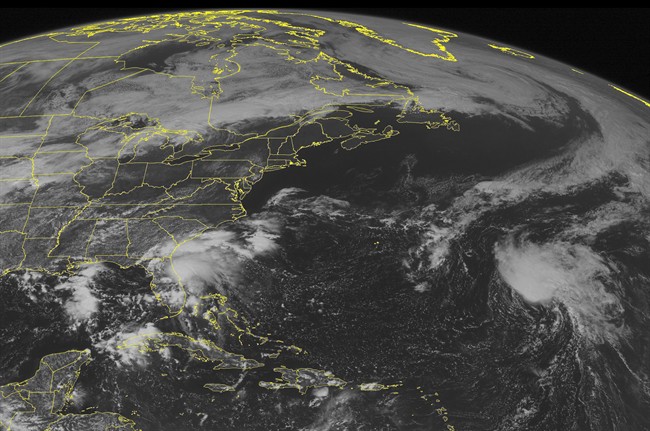MIAMI – Tropical Storm Julia was bringing heavy rain Wednesday morning to the northeast coast of Florida and southeast Georgia.

The slow-moving storm could cause flash flooding and was expected to produce 3 to 6 inches of rain in some areas through Friday, according to the U.S. The National Hurricane Center.
The Hurricane Center also said an isolated tornado was possible across coastal Georgia and southern South Carolina on Wednesday.
READ MORE: Hurricane Newton weakens to tropical storm as it makes landfall in Mexico
A tropical storm warning was in effect Wednesday morning for Fernandina Beach to the Altamaha Sound in Georgia.
By 5 a.m. EDT Wednesday, Julia was centred about 40 miles (65 kilometres) north Jacksonville, Florida, and moving north near 7 mph (11 kph). Its maximum sustained winds were near 40 mph (65 kph). The storm was expected to weaken to a tropical depression later in the day.
Elsewhere, Tropical Storm Ian is moving north in the central Atlantic but still is no threat to land. In the Pacific, Hurricane Orlene continues to weaken.
- Budget 2024 failed to spark ‘political reboot’ for Liberals, polling suggests
- Train goes up in flames while rolling through London, Ont. Here’s what we know
- Peel police chief met Sri Lankan officer a court says ‘participated’ in torture
- Wrong remains sent to ‘exhausted’ Canadian family after death on Cuba vacation



Comments